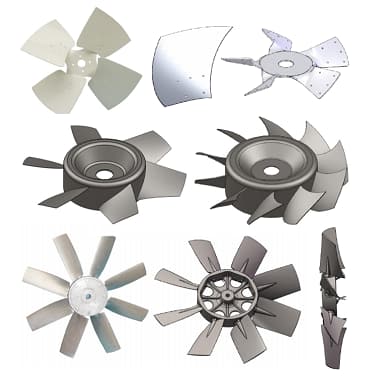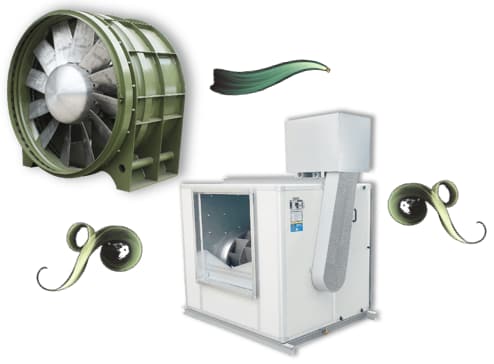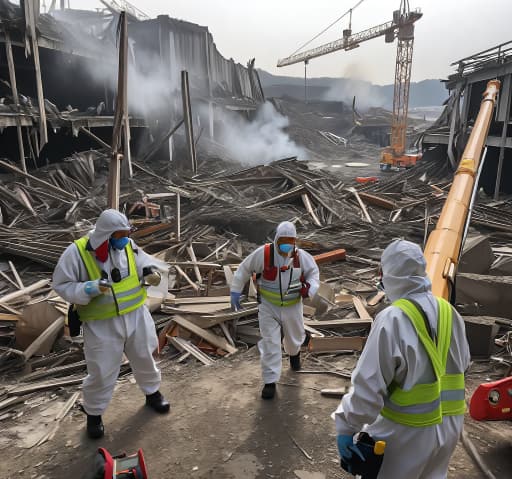Brief Intro of Induced Draft Fan (ID Fan)
In large-scale industrial processes where the management of hot gases, combustion air, or exhaust systems is critical, the Induced Draft Fan (ID Fan) plays a central role. Whether in power plants, cement kilns, steel mills, or chemical processing facilities, ID fans help maintain proper airflow and system pressure by pulling exhaust gases through the system.
At Zhejiang Shuangyang Fans Holding Co., Ltd, we provide high-performance induced draft fans engineered to meet demanding industrial standards. Our ID fans are widely used in coal-fired boilers, waste heat recovery units, and desulfurization systems.
What Is an Induced Draft Fan?
An Induced Draft Fan is a type of centrifugal fan that draws flue gases or hot air from a combustion chamber or furnace and pushes it through a heat recovery or filtration system before releasing it into the atmosphere via a stack or chimney.
Unlike forced draft fans, which blow air into a system, ID fans create negative pressure to maintain consistent airflow and combustion control. Their ability to handle high temperatures, abrasive gases, and corrosive environments makes them indispensable in modern industrial processes.
Structural Components of an ID Fan
An industrial ID fan is composed of several major components:
-
Impeller (Backward Curved or Radial Blades)
-
Scroll Housing (Casing)
-
Inlet Box or Expansion Joint
Moter
-
Drive Mechanism (Belt or Direct)
-
High-Temperature Bearings and Shaft Assembly
-
Base Frame with Vibration Isolation
-
Cooling and Insulation Systems
Each component is built to ensure durability and efficiency under extreme working conditions, and handle gas-laden air with dust, moisture, or corrosive chemicals.
Impeller Design: Engineered for Pressure and Durability
The impeller in an ID fan is typically a backward-curved or radial blade wheel, designed for high static pressure and robust performance. Blade types vary based on application:
-
Backward curved blades: Offer high efficiency and are suitable for clean to lightly dusty gas streams.
-
Radial blades: Used in heavy dust-laden environments due to their self-cleaning design and ruggedness.
The impeller is dynamically balanced to reduce vibration and extend bearing life, which is critical in power plants or steel manufacturing lines that run continuously.
Materials range from carbon steel and stainless steel to wear-resistant alloys, depending on temperature and gas composition.
Reference: AirPro Fan & Blower
Casing, Inlet, and Mounting
The fan housing is typically spiral or volute shaped, designed to guide airflow from the impeller toward the outlet while converting velocity into static pressure. The housing is reinforced with steel ribs and can be lined with abrasion-resistant ceramic or insulating material to handle elevated temperatures.
Inlet boxes or expansion joints are included upstream to accommodate thermal expansion and minimize mechanical stress during start-up and shutdown cycles. These components are often custom-built to fit the ductwork layout in power generation facilities.
Mounting frames are equipped with anti-vibration isolators, and base frames are designed for seismic compliance in critical infrastructure environments.
Drive Mechanism and Cooling Features
ID fans may use either:
-
Direct drive: Compact and efficient, but motor must be rated for high-temperature conditions.
-
Belt drive: Offers flexibility in speed control and motor placement outside the hot airstream.
Due to the high temperatures involved, motors are often air- or water-cooled, and the shaft and bearings are equipped with external cooling fans or lubrication systems to prevent overheating.
Some systems include shaft seals or bearing housing coolers, especially in flue gas desulfurization (FGD) applications.
Applications of ID Fans
ID fans are used in a range of industries, including:
-
Thermal power plants: Drawing combustion gases through economizers, air preheaters, and electrostatic precipitators.
-
Cement plants: Handling kiln exhaust and raw mill off-gas.
-
Chemical and petrochemical plants: Managing toxic or corrosive exhaust streams.
-
Steel production: Pulling flue gas from electric arc furnaces or reheating furnaces.
These fans are crucial for process stability, emission control, and heat recovery efficiency.
Performance and Customization
Modern ID fans often include:
-
Variable Frequency Drives (VFDs) for load matching and energy savings
-
Temperature and vibration sensors
-
Access doors for inspection and maintenance
-
Corrosion-resistant coatings for demanding applications
At SHUANGYANG FAN, we provide fully customized ID fans compliant with ISO standards.
Conclusion
The induced draft fan is a critical component in industrial ventilation systems where high pressure, temperature resistance, and operational reliability are required. Its structural configuration—from heavy-duty impeller design to reinforced casings and specialized bearings—is engineered to meet the most demanding performance standards.
As one of China's leading industrial fan manufacturers, SHUANGYANG FAN offers tailored ID fan solutions for global clients in power, cement, and steel sectors. With 3 decades of engineering expertise, we ensure performance, safety, and compliance in every application.
Note: The content of the article cannot avoid omissions and errors. Welcome to propose corrections.
 Libere el poder del ventilador de gabinete
Libere el poder del ventilador de gabinete
 Ventilador axial industrial: Cómo mantener una circulación de aire adecuada
Ventilador axial industrial: Cómo mantener una circulación de aire adecuada
 Ventilador de ventilación industrial: manteniendo una buena calidad del aire
Ventilador de ventilación industrial: manteniendo una buena calidad del aire
 Ventilador a prueba de explosiones: garantizando la seguridad en entornos peligrosos
Ventilador a prueba de explosiones: garantizando la seguridad en entornos peligrosos

